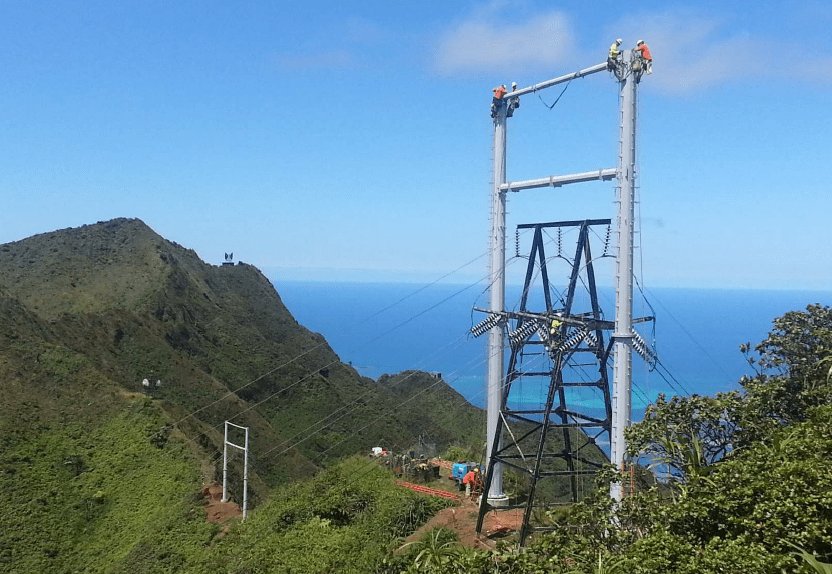
Grid Operations/Basics
The state of Hawaii operates on 6 independent grids, making energy resilience, reliability, renewable energy integration and storage especially important as the state moves towards its 100% renewable energy goal by 2045.
Energy System
Firm Vs Intermittent Power
Firm power refers to power available to use 24/7. Firm power gives the energy grid a baseload capacity for the days where intermittent sources aren’t able to provide as much power as required to sustain the demand. Firm power is necessary to provide a strong, steady, and reliable source of power to sustain generation needs.
Intermittent power refers to power available with respect to the resource being used. While intermittent sources of power can provide great inputs into the energy system, they cannot be considered fully reliable. These sources are more affected by outside forces but provide strong contributions when functioning.
Both sources are essential for power generation and maintaining a strong, resilient, and reliable energy ecosystem. To learn more about this topic, take a look at the fact sheet below.


How Does The Grid Work?
The energy grid is a complex system which requires multiple steps for the electricity to reach its destination. This multi-step process encompasses the generation, transmission, and distribution of electricity. Grids rely on balance of supply and demand to ensure there are no power outages or instability.
Grid reliability refers to the ability of the electric power system to consistently deliver electricity to consumers without interruption. It encompasses both adequacy and security, to ensure demand is met while maintaining stability during sudden disturbances. Reliable grids depend on a mix of infrastructure resilience, real-time monitoring, flexible generation sources, and robust transmission networks. As renewable energy and distributed resources expand, maintaining reliability requires advanced forecasting, energy storage, and smart grid technologies. Grid reliability is essential for economic stability, public safety, and the successful transition to a clean energy future.
To learn more about the energy grid check out the fact sheet below.
Hawaii’s Energy Reality
As of today, the majority of Hawaii’s energy comes from imported oil. Hawaii needs massive amounts of power to supply the household and business needs in the state. This reliance on imported oil makes Hawaii susceptible to price shocks due to the global marketplace of oil. There are also adverse health and environmental impacts from the burning of oil as our main fuel source. Spewing out massive amounts of carbon dioxide which are harmful to the environment and can lead to respiratory impacts. Transitioning to renewable sources of energy will bring Hawaii a more local, reliable, and cheaper energy reality.
To learn more about Hawaii’s energy reality, check out this fact sheet.

Energy Types
Renewable Energy Resources
Renewable energy resources are those that harness the natural resources and processes provided by the earth. These technologies such as solar, wind, geothermal, hydro, and biofuels are abundant and locally available, strengthening energy security. Unlike fossil fuels, they produce little to no greenhouse gasses and do not deplete over time. These resources promote the local production of energy, lowering the dependence of imported oil, while also supporting cleaner air and environmental sustainability. As technology improves, renewable energy continues to play a vital role in the global transition to a low-carbon future.
To learn more about renewable energy resources and technologies, follow this link to the Renewable Energy Resources page.
Non-Renewable Energy Resources
Non-Renewable energy resources are those that are typically extracted from the Earth and can be depleted without being easily replaced. These sources have historically provided reliable and affordable energy but also release harmful pollutants such as carbon or methane during extraction and use. The greenhouse gases released are harmful to the environment and contribute to climate change. Over dependence on such fuels can bring economic and geopolitical vulnerabilities due to their limited nature and susceptibility to market fluctuations. In Hawaii, transport of these fuels also brings risks to marine life and ecosystems.
To learn more about this topic, follow this link to the Non-Renewable energy sources page.
